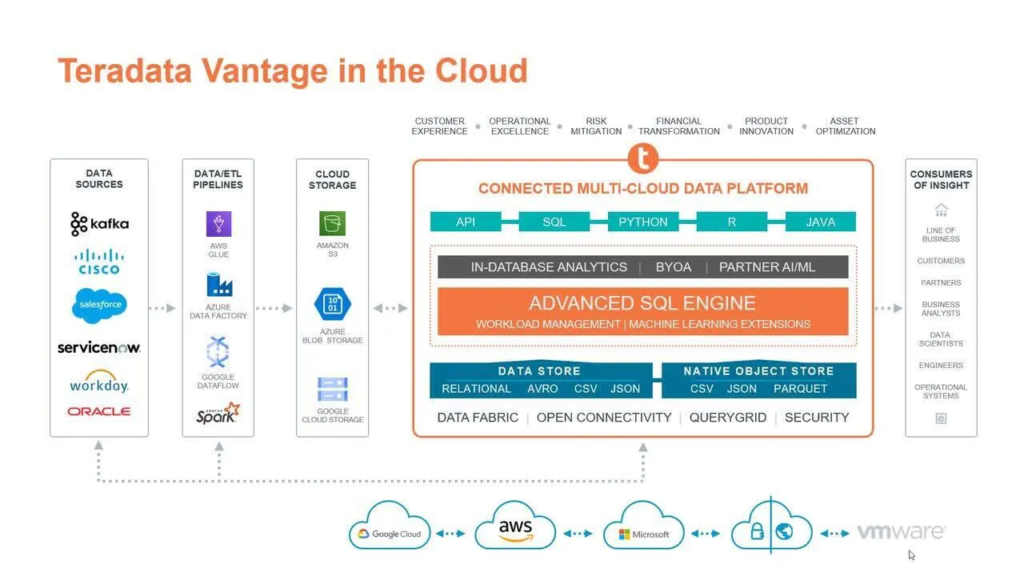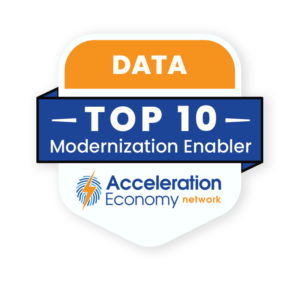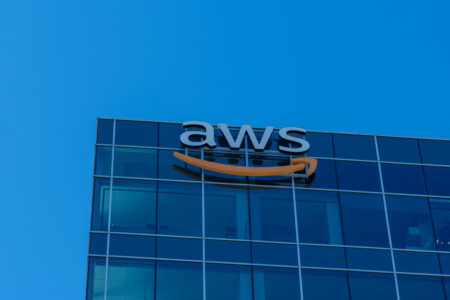
Multi-cloud environments are fast becoming standard in today’s data-driven organizations. In fact, 90 percent of large enterprises use a multi-cloud architecture that spans multiple cloud providers.
Key benefits of the multi-cloud approach include flexibility and scalability to support diverse workloads and capacity bursts. Jacqueline Woods, Teradata’s CMO, described the benefits of multi-cloud platforms, particularly for mid-market organizations, during Acceleration Economy’s Data Modernization Digital Battleground.
“The cloud provides them [companies] with the opportunity to scale and get different resources and tools that they might not otherwise have gotten,” she says. “They’re typically running with any of the hyperscalers like AWS, Microsoft, or Google Cloud, and that allows them to ebb and flow with peaks and valleys of their business.”
Yet, while multi-cloud deployment enables companies to adopt cloud applications that respond to current and emerging challenges and increase reliability, there are challenges that arise. One is the need to consolidate data from various systems and provide a comprehensive approach to analytics.
Consolidation is necessary because cloud services from various vendors can’t always communicate natively. This means, for example, that data from an organization’s CRM (customer relationship management) and accounting systems will require different processes for access and analysis.
In addition to combining data into a single unified source, data consolidation requires organization and cleansing to ensure users can access critical data quickly and take action on it. Teradata addresses these requirements with Vantage, its multi-cloud data platform that connects data lakes and warehouses, as well as diverse source systems and data types for holistic analysis.
Which companies are the most important vendors in data? Click here to see the Acceleration Economy Top 10 Data Modernization Short List, as selected by our expert team of practitioner-analysts
Who Is Teradata?
Teradata has been around for more than 40 years — it was founded in 1979 as a joint enterprise between Caltech and Citibank.
Initially, Teradata focused on data analytics hardware before moving into software. Today, the organization still develops some hardware, such as the VantageCore IntelliFlex, designed for the Vantage platform and launched in 2016, but its focus is primarily on software.
Since it was founded, Teradata has made 17 acquisitions. Most recently, the multi-server management developer StackIQ in 2017. Yet, by 2018, the company had shifted its focus to cloud analytics, which is where it excels today.
Teradata is led by company CEO and President Steve McMillan. Since joining Teradata in 2020, McMillan has helped steer the company’s multi-cloud-focused efforts, having previously served as the Senior Vice President of Customer Success and Managed Cloud Services at Oracle.
Teradata CTO Stephen Brobst has successfully launched three companies in the data warehousing sector. Claire Bramley, former Global Controller of HP Inc., is CFO.
A publicly held company, Teradata has just reported its Q1 2023 financial results:
- Public cloud ARR increased to $388 million from $209 million, an increase of 86% as reported and 89% in constant currency
- Total ARR of $1.506 billion, an increase of 6% as reported and 7% in constant currency from the prior year period
- First quarter recurring revenue of $389 million, an increase of 1% as reported and 4% in constant currency from the prior year period
“Teradata is off to a strong start in 2023 with sequential growth in total ARR, and we closed one of the largest deals in Teradata’s history…tangible proof points of our cloud-first strategy in action,” said Steve McMillan, President and CEO, Teradata
What Does Teradata Do?
Teradata’s core product is Vantage, which supports multi-cloud and hybrid architecture and unifies a company’s diverse data sources, enabling users to get complete visibility of all corporate data in one place. Vantage enables data connection across on-prem and cloud domains, empowering users with on-demand, real-time insights from anywhere.
With data and analytics unified, users can quickly and easily conduct predictive and prescriptive analytics and automate decision-making, while taking advantage of machine learning (ML) and visualization tools.
Flexible deployment is another benefit of the technology. Teradata customers can choose to deploy the software on-prem with IntelliFlex or VMWare. Alternatively, Vantage can be deployed in hybrid multi-cloud environments or on public clouds, including AWS, Azure, and Google Cloud. The company recently launched Teradata VantageCloud Lake on AWS.
VantageCloud Lake is part of Teradata’s VantageCloud service, which includes VantageCloud Enterprise. Formerly called Vantage in the Cloud, VantageCloud Enterprise supports managed workloads and advanced analytics in public cloud environments.
VantageCloud Lake is built on Teradata’s cloud-native architecture; it enables organizations to store and analyze data at scale. Core functions include in-database advanced analytics, artificial intelligence (AI) and ML-powered management of data models all in a single, cloud-native operating environment.
As a self-service tool, Teradata aims, with VantageCloud Lake, to democratize analytics capabilities. Teradata’s Chief Product Officer Hillary Ashton described the benefits of the technology in a statement at the time of launch.

“Teradata VantageCloud Lake is the result of a multi-year journey to create a new paradigm for data and analytics — one where superior performance, agility, and value all go hand-in-hand,” she says.
“VantageCloud Enterprise — our established Vantage in the cloud offering — is the recognized price performance leader in the market. Teradata VantageCloud Lake offers all of those same benefits in a package that is appealing to diverse functions and roles, opening up an entirely new market segment for us.”
Acceleration Economy analyst, data modernization expert, and CIO Wayne Sadin says that Teradata’s VantageCloud environment frees database support engineers and data scientists from worrying about where data is located and lets them focus instead on how to turn big data into actionable information.

“I’m happy to partner with a firm like Teradata that combines depth, breadth, and experience. I’m delighted that Teradata has kept the best parts of the old appliance builder as they adopted modern-cloud architectures to solve today’s problems.”
Wayne Sadin, Acceleration Economy analyst, CIO
Teradata’s long history of supporting mission-critical applications at some of the largest firms in heavily regulated industries means that its products can help mid-market and enterprise CIOs and data-science teams manage “information factories” that work for their industry and scale. “As a CIO, I’m happy to partner with a firm like Teradata that combines depth, breadth, and experience,” Sadin says. “I’m delighted that Teradata has kept the best parts of the old appliance builder as they adopted modern-cloud architectures to solve today’s problems.”
Customers It Has Dazzled
Texas Health Resources (THR) is a nonprofit health system that serves 7 million people in North Texas through a physicians group, hospitals, outpatient facilities, neighborhood care and wellness centers, home health, as well as preventative and fitness services.

Over 350 access points (hospitals, outpatient facilities, clinics and doctors’ offices) allow patients to interact with and receive care from THR. Data gathered at these access points include patient experience, provider comments, clinical documentation, behavioral health details, and much more.
Prior to its work with Teradata, Texas Health Resources wasn’t able to bring together patient identities to encourage desired behaviors; for example, it couldn’t connect a physicians group visit back to one of its hospitals. It couldn’t identify a single record, or source of truth, for patients.
Since implementing a Teradata data warehouse, the health system is able to integrate data across multiple source systems, allowing THR to drive deeper insights to improve patient experience and health outcomes. The Teradata data warehouse has grown from 12 source systems in 2018 to dozens of systems today.
The results:
- Encouraging desired patient behaviors through personalized messages
- Connecting emergency department visits to long-term benefits
- Integrating healthcare interactions for a complete picture of patient journeys
- Geocoding patient proximity to access points
- Balancing hospital preference and proximity based on specialized care requirements
Why Teradata Is a Top 10 Data Modernization Enabler
Teradata provides powerful data unification tools that have impacted many global and mid-sized organizations. We chose to include the company in our Top 10 Data Modernization Enabler shortlist for the following reasons:
- Teradata’s technology addresses customers’ objective to use multi-cloud environments for scalability and flexibility.
- Data modernization is fueled by consolidation, and VantageCloud is a leading platform for enabling data-driven insights across diverse data sources.
- VantageCloud Lake recognizes and responds to the need for self-service analytics and supports company-wide digital innovations.
- The company’s track record with acquisitions shows a relentless commitment to the delivery of next-generation data management technologies that benefit customers.
Want more insights into all things data? Visit the Data Modernization channel:











